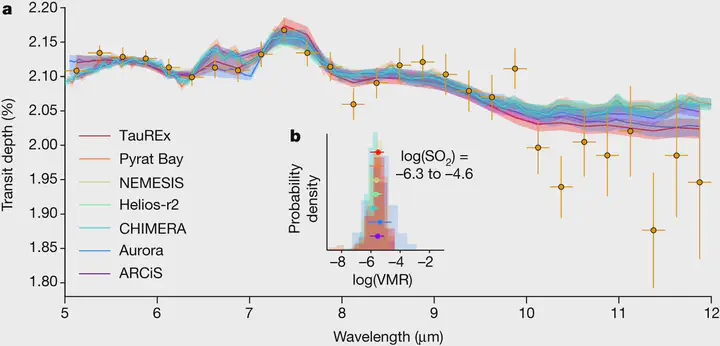
The recent inference of sulfur dioxide (SO$_2$) in the atmosphere of the hot (approximately 1,100 K), Saturn-mass exoplanet WASP-39b from near-infrared JWST observations$^1-3$ suggests that photochemistry is a key process in high-temperature exoplanet atmospheres$^4$. This is because of the low (<1 ppb) abundance of SO$_2$ under thermochemical equilibrium compared with that produced from the photochemistry of H$_2$O and H$_2$S (1-10 ppm)$^4-9$. However, the SO$_2$ inference was made from a single, small molecular feature in the transmission spectrum of WASP-39b at 4.05 ensuremathμm and, therefore, the detection of other SO$_2$ absorption bands at different wavelengths is needed to better constrain the SO$_2$ abundance. Here we report the detection of SO$_2$ spectral features at 7.7 and 8.5 ensuremathμm in the 5-12-ensuremathμm transmission spectrum of WASP-39b measured by the JWST Mid-Infrared Instrument (MIRI) Low Resolution Spectrometer (LRS)$^10$. Our observations suggest an abundance of SO$_2$ of 0.5-25 ppm (1ensuremathσ range), consistent with previous findings$^4$. As well as SO$_2$, we find broad water-vapour absorption features, as well as an unexplained decrease in the transit depth at wavelengths longer than 10 ensuremathμm. Fitting the spectrum with a grid of atmospheric forward models, we derive an atmospheric heavy-element content (metallicity) for WASP-39b of approximately 7.1-8.0 times solar and demonstrate that photochemistry shapes the spectra of WASP-39b across a broad wavelength range.